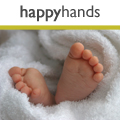Toddler
Health
Buyer's guide to feeding bottles
Most standard feeding bottles will work for most babies. However, babies have difficulty getting used to the change from breast to bottle might prefer certain styles of teat. Also, several models of bottle offer differing designs aimed at combating gas or colic.
Feeding bottles – useful basics to look for
Most parents are likely to go for the first reasonably-priced model of bottle they find. The general standard is fairly good and choosing the right one for you might simply be down to personal preference, however, do consider these points:
• Easy to assemble
Putting a bottle together can be tricky to put together when you are comforting a hungry baby at the same time. Does the model you are looking at have more than three components and are these easy to screw together?
• Easy to clean
Bottles, teats and their accessories need to be thoroughly washed and then sterilised between uses, so look for a model that either comes with its own small cleaning brushes or which has fewer nooks and crannies to get clean. (Read more on bottle hygiene.)
• Non-leak
Most models should not leak at first though some tend to loosen with age. If you can, ask friends if they are happy with their model of bottle.
Other key features
• ‘Colic reducing’
Bottles designed to reduce the amount of air bubbles being taken in by your baby during a feed do help lessen the risk of your baby getting too gassy. An in-built vent which also allows a good flow of milk will help your baby to drink at his own speed rather than having to cope with a gush of fluid. Some bottles, including Born Free and Dr Brown’s, have specially designed air vents inside to help combat the problem of baby discomfort after feeds. Avent bottles are designed with a teat which helps combat air bubbles before your baby drinks the milk.
• Glass bottles
An alternative to plastic bottles, these are tough and easy to clean (and used widely in the US) but might not be ideal for parents worried about breakages.
• BPA-free bottles
After the growing concern over many regular plastic bottles – which ‘leak’ small amounts of a hazardous chemical as they age or get scratched – more and more companies have switched to bisphenol A-free bottles for feeding infants. (Read more about what **BPA-free means.)
• Bottles and breastpumps
If you plan to express, it does make life a bit easier if you use the same model for bottle and pump. However even if you don’t have the same model of bottle and pump, you can pour between the two.
• Correct Suckling
Suckling correctly encourages proper development of a baby’s mouth, tongue and jaw. Breastfeeding does this naturally, but a good teat and a bottle that allows a natural sucking flow to be initiated by your baby can help too. NUK’s orthodontic teat is approved by the British Dental Health Foundation and is based on the shape of a mother’s nipple.
Shape and style
• Brands like Boots ‘Natural-feel’ bottles and Tommee Tippee’s ‘Closer to Nature’ range are shaped to give a more breast-like feel. You could try these, though there is no reason in particular why more upright bottles won’t work for your baby. It’s more about how comfortable the bottle feels to you, when you hold it at a good angle for feeding your baby. The Tommee Tippee model, for example, is designed in a compact form in order to fit more closely to your baby when feeding in your arms.
• If your baby is a slow feeder, finding a bottle that is comfortable for you to hold correctly will be important. NEVER just prop up a bottle to your baby’s mouth without holding it and watching that your baby is feeding properly.
• Wide neck, narrow neck, fat or thin. Bottles do come in different shapes and sizes but it’s the way they allow the flow of milk through that’s important. (See ‘colic reducing’ above.)
Key points to think about
• If you have a steriliser by one brand, it doesn’t mean you have to stick to that brand of bottles. It might just be that you can fit less bottles and teats in at a time when running a sterilising cycle.
• With some bottles you might even be able to mix and match teats, so long as you use the right ring to seal it to prevent leaking.
• Premmie bottles. Dr Brown’s include in their range a specially designed bottle to carry small amounts of milk (60ml/2oz). These match up with smaller slow-flow teats suitable for premature babies.
• Don’t feel you have to buy a series of differently sized bottles. You can feed a smaller baby with a larger bottle so long as you have only offered the correct amount of milk for the stage your baby is at.
Teats
Find out more about how important the right teats can be by going to the Buyer’s guide to feeding teats.
Related Articles
Bottle-feeding: keeping it natural
Buyer's guide to feeding teats
Breastfeeding Guide: getting started
Sterilising and bottle hygiene
Related Products
Nibbling, Chelsea Teething Necklace
Vital Baby, Nurture breast-like feeding bottle
Born Free, BornFree Toddler Drinking Cup
Nibbling, Victoria Teething Necklace
Related Forum Topics
Forums: Toddlers
Re: Has anyone tried Zita West's fertility supplements? Or what else worked for you?
Guider, Mother of 1, Leicestershire
Have Your Say
Be the first person to comment on this article, just post a comment below.





In order to post a comment you need to be a member. Join Now | Sign in